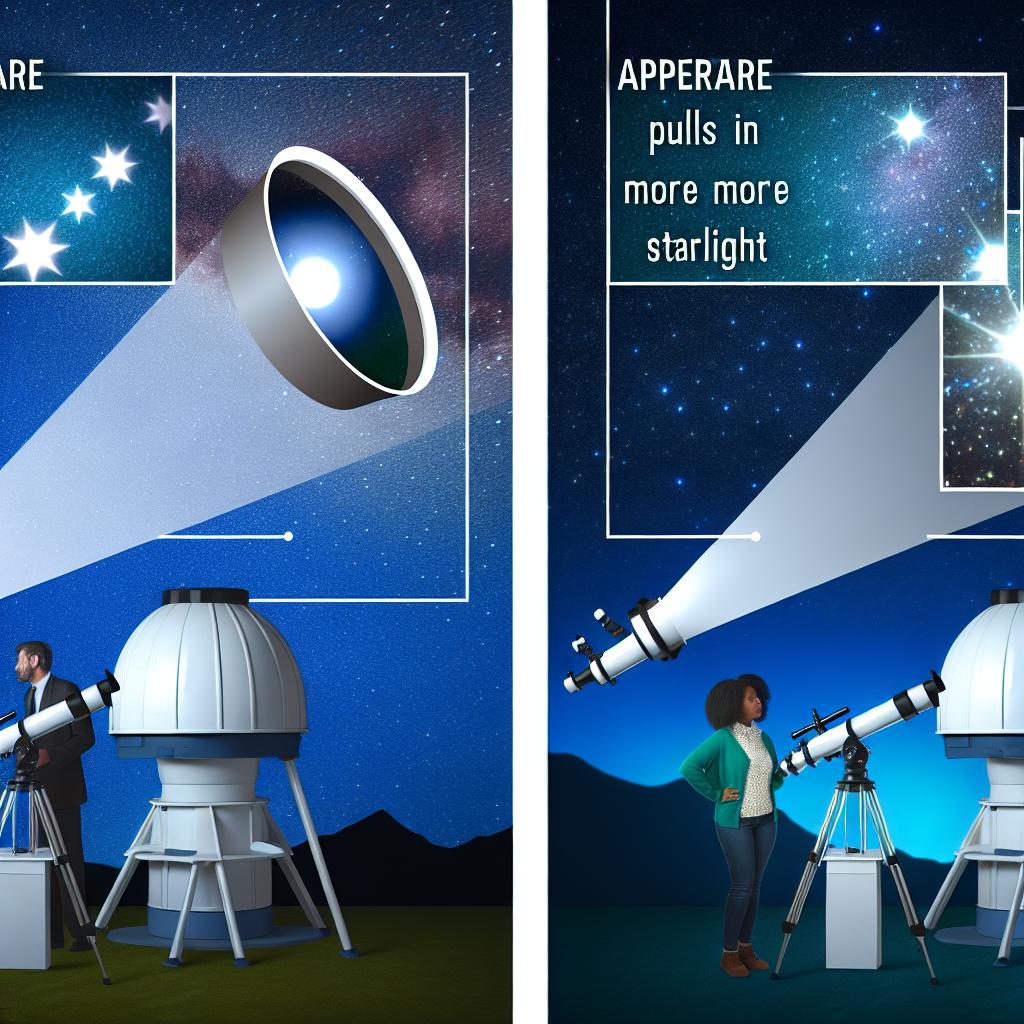Understanding Aperture in Telescopes
The aperture of a telescope is a fundamental component that significantly influences its performance and capabilities. Defined as the diameter of the primary lens or mirror, the aperture determines the amount of light that a telescope can collect. This light-collecting ability is crucial for observing faint and distant celestial objects. The larger the aperture, the more light a telescope can capture, thus making celestial bodies appear brighter and more detailed.
The Role of Aperture in Light Gathering
The primary function of a telescope is to gather light, and the aperture plays a pivotal role in this. The greater the aperture, the higher the telescope’s light-gathering capability. This feature allows astronomers to observe objects in deeper space, which might be too dim for telescopes with smaller apertures. The brightness and clarity of the celestial objects observed through a telescope are directly tied to this light-gathering ability.
The enhanced light-gathering capability of a larger aperture provides several benefits. Firstly, it significantly brightens the images viewed through the telescope, making it possible to see objects that are beyond the reach of smaller telescopes. For amateur astronomers, a larger aperture opens up a universe of possibilities, allowing them to explore distant galaxies, nebulae, and star clusters that are otherwise invisible from Earth. For professional astronomers, such capabilities are indispensable for tasks such as detailed studies of the cosmos, where faint objects must be clearly observed and analyzed.
Aperture’s Impact on Resolution
In addition to light-gathering power, aperture greatly influences the resolution of a telescope. Resolution refers to the telescope’s ability to distinguish closely spaced objects in the sky. A larger aperture typically provides a higher resolution, revealing finer details in celestial bodies and making the telescope capable of distinguishing between two stars that appear extremely close together.
This improved resolution is particularly advantageous when studying surface features on planets, such as the polar ice caps on Mars or the cloud bands on Jupiter. In addition, the intricate structures within galaxies and nebulae are revealed in more detail with a higher resolution. Hence, astronomers with large-aperture telescopes can conduct more detailed and nuanced studies of the celestial objects they observe.
The Relationship Between Aperture and Magnification
One common misconception among novice telescope users is prioritizing high magnification. In reality, magnification without adequate aperture can lead to unsatisfactory results. Without a sufficient aperture, increased magnification can produce dim and blurry images, which diminishes the quality of the observations.
Aperture aids magnification by providing the bright and clear images necessary to make higher magnifications useful and effective. Simply put, a larger aperture supports better and clearer magnification, enhancing observation quality and making it easier to detect finer details that high magnification aims to reveal. For individuals interested in deep-space observation, ensuring that the aperture can adequately support the desired magnification levels is crucial.
Considerations in Telescope Selection
When selecting a telescope, aperture is one of the first features to consider, commonly being referred to as the most important. Larger apertures are ideal for viewing faint and detailed objects. Nonetheless, there are practical considerations associated with larger apertures. They typically result in telescopes that are bulkier, heavier, and more expensive. Therefore, selecting a telescope should involve balancing these factors against your observation goals, budget, and physical capability to handle and transport the equipment.
For astronomers focusing on specific types of observations, such as planetary exploration versus deep-sky observation, choosing the appropriate aperture size becomes even more critical. For planetary observations, where higher resolution is beneficial, a moderately large aperture might suffice. In contrast, for deep-sky viewing, a telescope with a large aperture becomes essential to gather enough light to view distant galaxies and nebulae.
In conclusion, aperture is a critical determinant of a telescope’s performance, affecting its light-gathering ability, resolution, and effective magnification. Careful consideration of aperture size based on observational needs can greatly enhance the stargazing experience. By understanding how aperture influences these aspects of telescope performance, both amateur and professional astronomers can make more informed decisions when selecting the equipment best suited for their celestial explorations.
The right choice of aperture can significantly impact the quality and range of astronomical observations. Whether aiming to uncover the secrets of nearby planets or explore the vastness of distant galaxies, understanding and choosing the correct aperture size will serve as the foundation for a fulfilling and successful observational journey.
This article was last updated on: July 19, 2025


